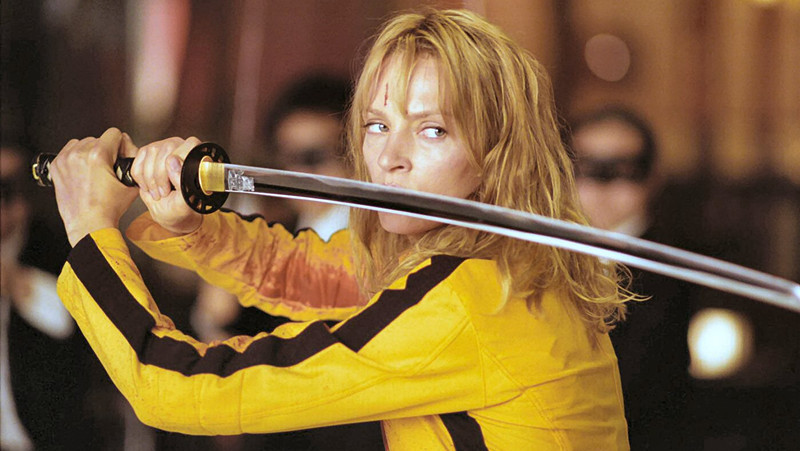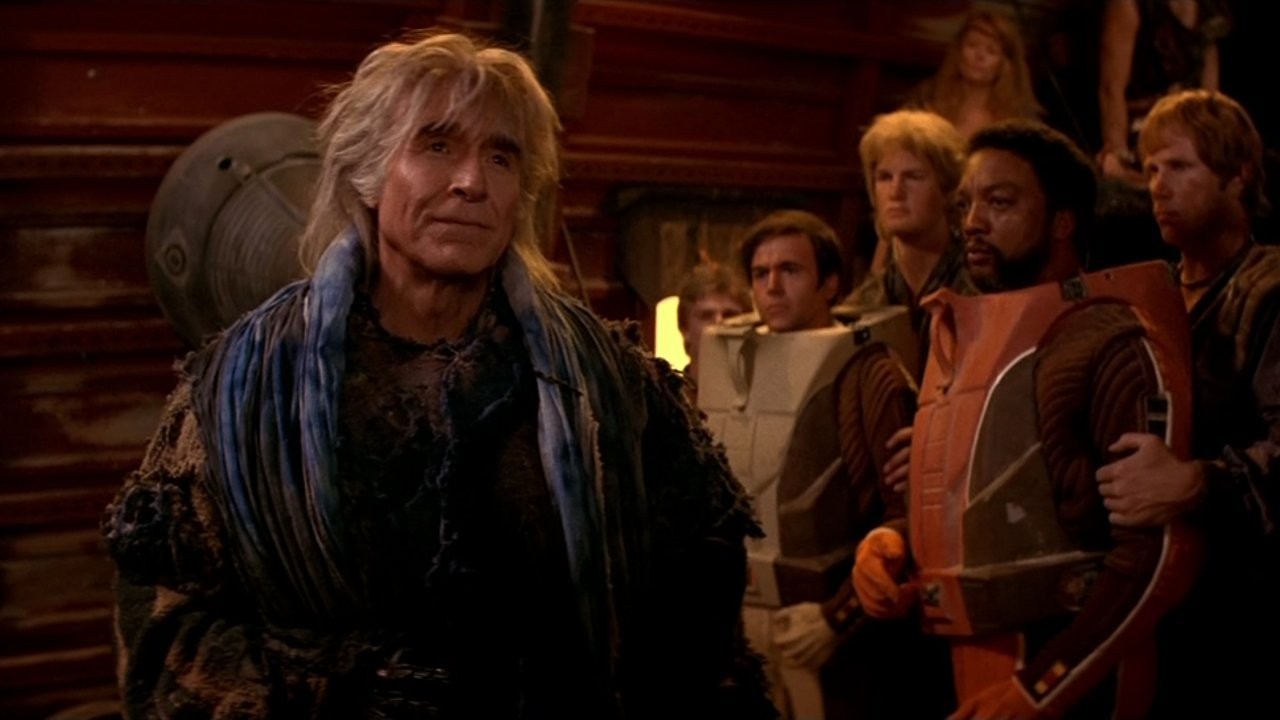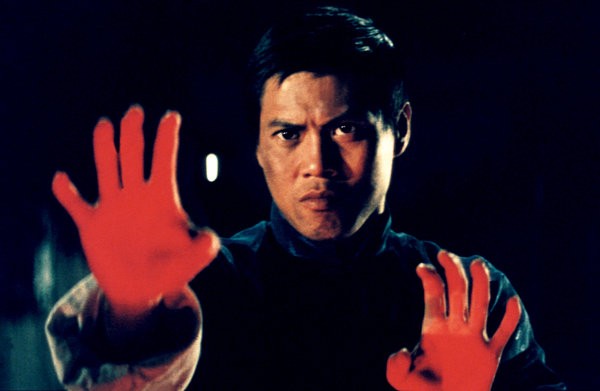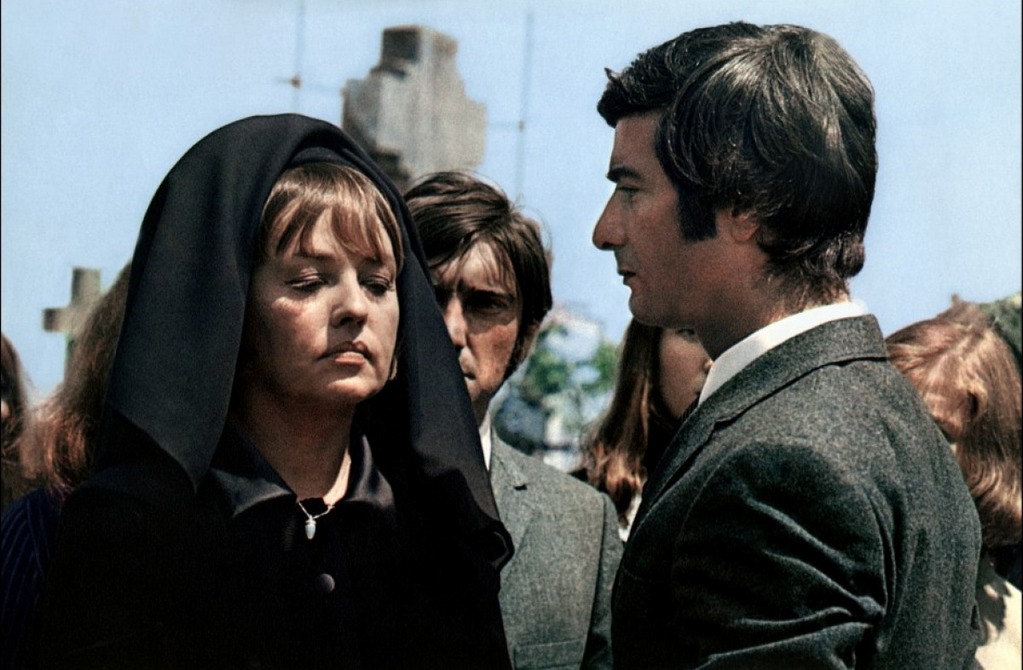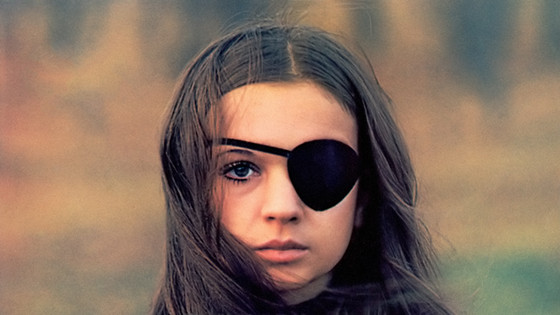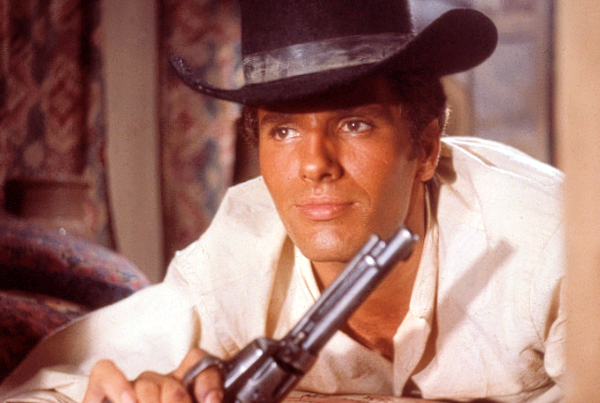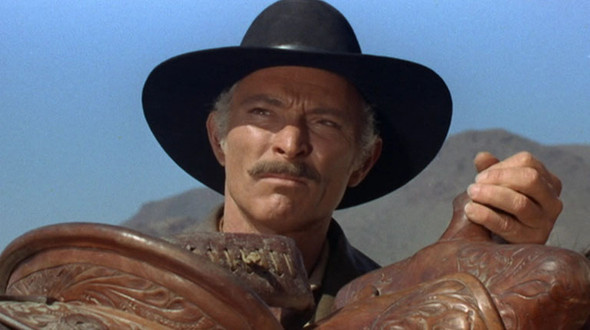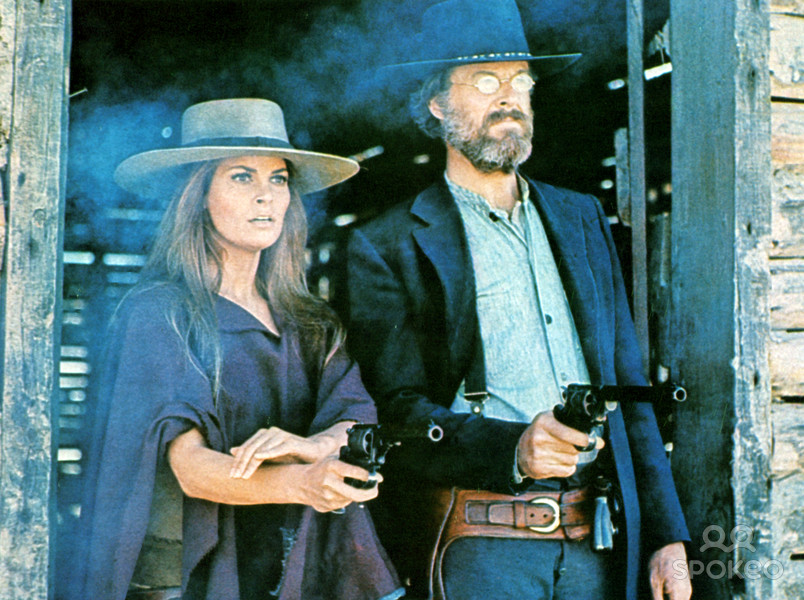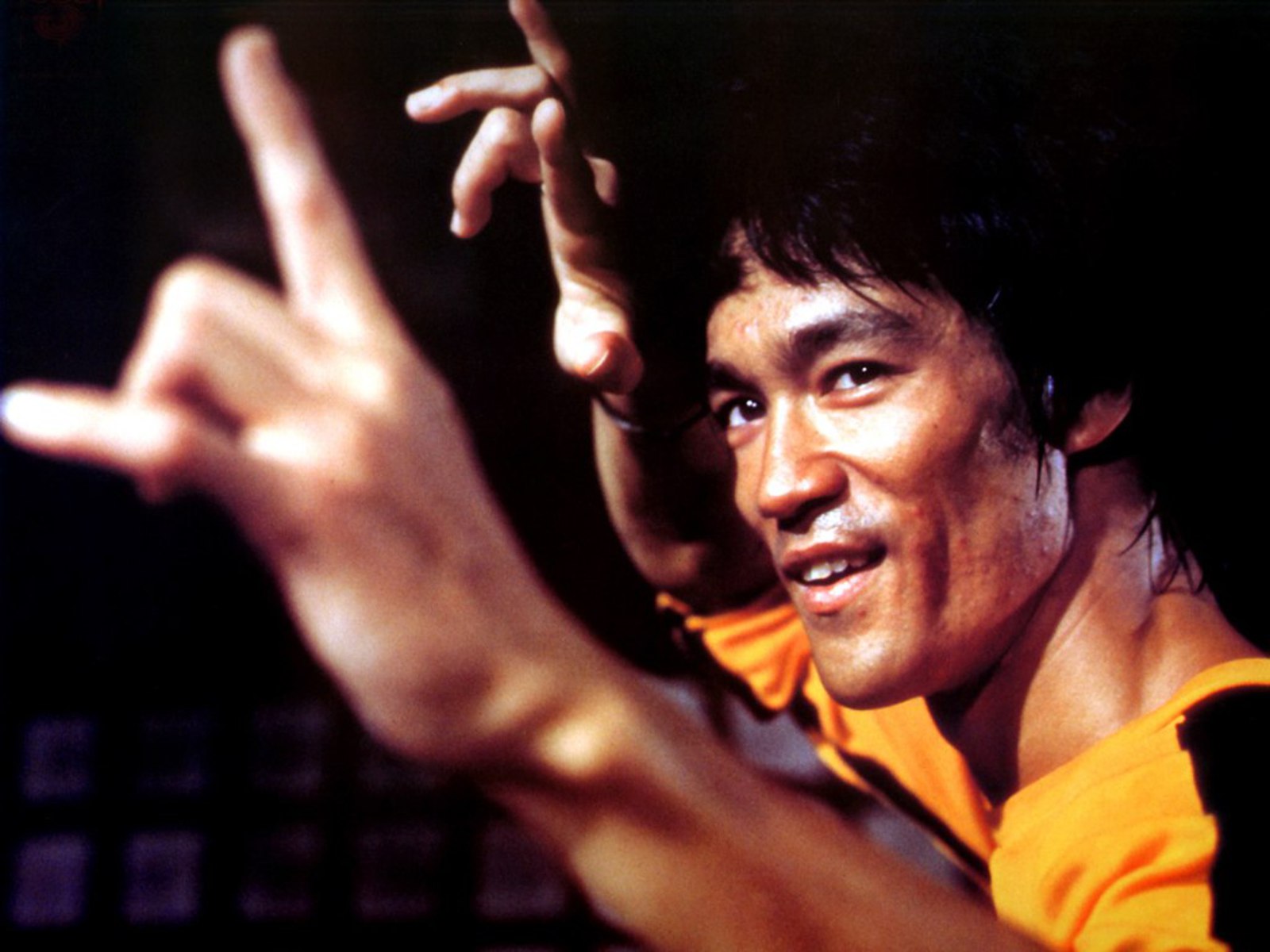After a six year absence from cinema screens, Quentin Tarantino released to the world his foray into global action cinema with an epic tale of revenge – Kill Bill. Told over two parts (or one Whole Bloody Affair), Kill Bill recounts the blood-soaked vengeance of the Bride (Uma Thurman), a former member of the Deadly Viper Assassination Squad who left the team while pregnant with the child of her boss, Bill (David Carradine).
Bill and his crew trace the Bride to a chapel where her wedding rehearsal is proceeding and gun down all in attendance, failing to kill the Bride despite shooting her in the head. Once recovered from her injuries, the Bride sets out “what the movie advertisements refer to as a roaring rampage of revenge,” hunting down each of the Deadly Vipers on a path to kill Bill.
Ever the cinematic magpie, Tarantino’s Kill Bill traverses the classic landscapes of revenge cinema – wuxia, spaghetti westerns, blaxploitation, jidaigeki and chambara, biker films and carsploitation, rape and revenge movies, and other exploitation subgenres.
Through the clash of Japanese steel and the snap of kung fu kicks, the fanfare of Italian composers and dusty terrain of the Western, Kill Bill becomes a collage of classic and obscure vengeance-themed films from their heydays in the late 1960s and 1970s, drawing on the symbolic values and meanings associated with these ostentatious citations to provide further depth to the Bride’s grand quest for justice and to balance out the harm inflicted upon her and her baby.
This list canvasses 24 revenge-themed films cited in Kill Bill. Some are well known; others are not. Some films are bona fide masterpieces; others fall well short. Most references are obviously intended; others may simply be coincidental. Nevertheless, the self-consciousness and seemingly endless intertextuality of Kill Bill makes each film remarkable to those seeking to better appreciate Quentin Tarantino’s monumental tale of revenge and recompense.
1. Star Trek II: The Wrath of Khan (1982)
Kill Bill Vol. 1 opens with an epigraph – “Revenge is a dish best served cold.” This “Old Klingon Proverb” is attributable Khan Noonien Singh (Ricardo Montalbán), rival to Starfleet Admiral James T. Kirk (William Shatner) and the villain of Nicholas Meyer’s Star Trek II: The Wrath of Khan (1982).
Khan returns from the TV series having been exiled with his genetically engineered brethren, adrift in space for 15 years. Blaming Kirk for the death of his wife, he sets upon a plot to destroy Kirk and his crew and obtain a powerful terraforming device.
Star Trek II was a critical and commercial success, setting a record for opening day box office gross and saving the franchise after the commercial failure of its thinly plotted, effects-heavy predecessor, Star Trek: The Motion Picture (Robert Wise, 1979). Meyer aimed to produce a swashbuckling air of adventure that harkened to the original TV series and modelled Khan’s obsession with Kirk on Captain Ahab in Moby Dick.
Tarantino’s use of the quote is an ironic opening statement that celebrates Kill Bill’s reflexive attitude, its remix spirit, and ethic of appropriation. This winking declaration sets a perfect tone for QT’s journey through genre cinema and its iconic tales of single-minded vengeance.
2. Five Fingers of Death (1972)
Kill Bill kicks off with the Bride arriving with murderous intentions to the Pasadena home of former Deadly Viper, Vernita Green (Vivica A. Fox).
On first seeing Green, a siren-like wail, a flush of red, and superimposed imagery of the chapel massacre at Two Pines announces the Bride’s grudge and her impending assault. That wail technically originates from the TV series Ironside, however its appearance refers to Five Fingers of Death (Chang-hwa Chung, 1972), a Chinese kung fu film that itself appropriates Quincy Jones’s composition.
Five Fingers of Death (aka King Boxer) stars Lo Lieh as Chao Chih-Hao, a young martial arts student entrusted with a secret technique – the Iron Fist. Chih-Hao’s hands are broken by three Japanese henchmen acting for a cruel villain, but diligent training allows him to eventually better his rivals at a major martial arts tournament and avenge himself against his Japanese rival.
Five Fingers of Death initiated the North American craze for wuxia films and its fingerprints are found across Kill Bill. Beyond the Ironside siren, Kill Bill shares with King Boxer a student-master relationship, a character’s blinding, and a House of Blue Leaves set that bears a conspicuous resemblance to a restaurant in Chang-hwa Chung’s film. As well, Chih-Hao’s secret technique recalls the Bride’s own special blow – the Five-Point-Palm Exploding-Heart-Technique.
3. The Bride Wore Black (1968)
Kill Bill greatly resembles Francois Truffaut’s The Bride Wore Black (1968), yet Tarantino asserts he had never seen the film, claiming to be more of a Jean-Luc Godard man. (Tarantino did name his production company after JLG’s Bande à parte (1964).)
Accidental or not, it’s nearly impossible to not see the presence of The Bride Wore Black in Kill Bill. Truffaut’s film concerns Julie Kohler (Jeanne Moreau) and her carefully orchestrated plot to murder the five men who accidentally killed her husband on their wedding day.
Of particular interest is Kohler’s list of targets, a page of names that bears shocking similarity to the Bride’s own “Death List Five,” first seen after the Bride kills Vernita, her name struck from the list just as Kohler does in The Bride Wore Black. Kohler even places a question mark next to one name, much as QT does to Elle’s during Vol. 2’s final credits.
In truth, it takes some effort accept that QT was unfamiliar with Truffaut’s film given that it adapts a novel by Cornell Woolrich, features a score by Bernard Herrmann, and functions as an homage of Alfred Hitchcock’s thrillers. On the other hand, even Truffaut came to largely disclaim the film, frustrated by the lighting and cinematography Raoul Coutard who the director felt failed to capture Moreau’s beauty, under lit locations, and missed the emotional tone of some scenes.
Despite a troubled shoot and poor reception among critics, The Bride Wore Black was a hit and lives on with an unintended legacy in Kill Bill.
4. Thriller: A Cruel Picture (1973)
The appearance of Daryl Hannah’s eye-patch wearing assassin, Elle Driver, recalls a few one-eyed Tarantino favorites such as Snake Plissken (Kurt Russell) from Escape From New York (John Carpenter, 1981) and Patch (Monica Gayle) from Jack Hill’s Switchblade Sisters (1975), but none more so than Christina Lindberg’s mute avenger in Thriller: A Cruel Picture (Bo Arne Vibenius as Alex Fridolinski, 1973). QT confirmed his inspiration to Eiga Hi-Ho magazine:
“I love Christina Lindberg. And that’s definitely who Daryl Hannah’s character is based on … Just like They Call Her One Eye, she’s got some color coordinated eye patches. And that is, of all the revenge movies I’ve even seen, … definitely the roughest. There’s never been anything as tough as that movie.”
Elle, another former Deadly Viper, appears in Vol. 1 sauntering into the Bride’s hospital, happily whistling in anticipation of finishing The Bride off once and for all. The spring in her step might mistake Elle for someone more jovial, but that eye patch declares without hesitation that she is a stone cold killer and not one to cross, and fans of exploitation cinema immediately connect the character to one of cinema’s most harshly earned tales of revenge.
The poster for Thriller (a.k.a. They Call Her One Eye) encapsulates its terrible plot – “First they took her speech … Then her sight … When they were finished she used what was left of her for her own frightening kind of revenge!” – although the injuries suffered by Lindberg’s character are worse than can be imagined.
She is rendered mute after being raped as a child, kidnapped as a young woman, hooked on heroin, forced into prostitution, stabbed in the eye for her disobedience, and has her parents pushed to suicide by the hateful letters written by her pimps. Studies in shooting and driving are eventually put to use by the film’s conclusion, yet Lindberg’s gunning down of her oppressors barely seems like satisfaction for the injustices suffered.
Thriller has been subject to various bans and edits since its production, its notoriety arising from its graphic eye-gouging scene, its use of live ammunition, hardcore pornographic footage, and its depiction of actual injections. QT is certainly correct – Thriller is a tough watch, even for hardened grindhouse fans.
5. Long Days of Vengeance (1967)
Florestano Vancini’s sole western, Long Days of Vengeance (1967), is a Spaghetti Western remake of Alexandre Dumas’ The Count of Monte Cristo. Also known in Italy as I lunghi giorni della vendetta and abroad as Days of Vengeance and The Deadliest Gunfight, the film stars Giuliano Gemma as Ted Barnett, a dashing, snappily dressed man who escapes after years in a prison work camp where he was falsely incarcerated for the murder of his father.
Barnett travels to the border community of Kartown to seek his vengeance on his former fiancé Dolly (Nieves Navarro), her sheriff husband Douglas (Francisco Rabal), and the corrupt landowner Cobb (Conrado San Martin) who smuggles weapons to the Mexicans and slaves to the Confederacy. When Barnett gathers his evidence, he first appeals to Kartown’s judge, but is accused of his father’s murder once again, and his trip to the gallows precedes the film’s guns-ablazing climax.
Long Days of Vengeance has proven to be something of an unusual example of its genre. Vancini only took on the project provided his identity remain undisclosed and he be credited as Stan Vance, and some, including the Spaghetti Western’s patron saint Sergio Leone, rejected Vancini’s final product.
In fairness, Vancini eschews many of the conventions established by Leone by frequently depicting its sudden and violent acts from a distance or even off-screen. And while the film’s pace can become downright languid at times, Long Days of Vengeance recalls Tarantino’s work in its sometimes overt violence and its particularly talkative characters.
Kill Bill employs Armando Travaioli’s theme during the animated history of former Deadly Viper O-Ren Ishii. Travaioli, in his only Spaghetti Western score, constructs the film’s theme from a plaintively soaring trumpet supported on guitar strings and a militaristic drum beat, offering grandeur and sorrow to O-Ren’s tragic story from victim to professional assassin.
6. Death Rides a Horse (1967)
Giulio Petroni’s Death Rides a Horse (1967) can be found frequently throughout Kill Bill, inspiring some of its most iconic images.
Bill (John Philip Law) is scarred with the childhood memory of seeing his mother and sister raped, his family murdered, and his homestead burned down by four outlaws each bearing a distinctive feature (a chest tattoo of four aces, a unique earring, a facial scar, and a skull on a necklace). He commits himself to killing these men and meets Ryan (Lee Van Cleef), a recently released convict hunting down the same men and having no interest in working with Bill.
Van Cleef is excellent throughout and his presence seems to encourage cinematographer Carlo Carlini to channel his inner Leone and fully embrace the Spaghetti Western’s iconic close-up with Lee’s intensely piercing eyes and its widescreen limits with landscape of the Almerian desert. The Leone influence is further felt by Ennio Morricone’s distinctive score of choral chants, kettle drums, and unusual sounds.
Death Rides a Horse is one of many films, like Lady Snowblood, I Spit on Your Grave, and The Bride Wore Black, that offers a plot familiar to Kill Bill – a revenge quest against a handful of specific individuals responsible for a terrible harm.
Kill Bill’s most obvious and iconic appropriation from Death Rides a Horse comes when the Bride meets her target and the screen flushes red with the imagery of her originating harm superimposed over her, something that occurs in Petroni’s film when Bill finds himself confronting the outlaws that massacred his family.
Death Rides a Horse also contains the same “revenge is a dish best served cold” adage, its opening slaughter resembles both the DiVAS attack on the Two Pines Chapel and O-Ren Ishii’s back-story, a skull ring in Kill Bill recalls the skull necklace in Petroni’s film, Morricone’s theme, “I Giorni Dell’ira,” is heard in the scene where the Bride severs Sophie Fatale’s arm, and the Bride’s line, “She made on big mistake.
She should have killed ten,” nods to the trailer for Death Rides a Horse which proclaims, “The bandits who killed five defenceless people made one big mistake. They should have killed six.” Petroni’s film is a foundational text to Kill Bill on par with Lady Snowblood in its seemingly constant presence.
7. Hannie Caulder (1971)
Before embarking on her quest for vengeance on Bill and the DiVAS, starting with O-Ren, the Bride travels to Okinawa to obtain a katana from the legendary sword-maker Hattori Hanzo (Sonny Chiba). Tarantino acknowledged Burt Kennedy’s Hannie Caulder (1971) as an inspiration to Kill Bill, noting a particular kinship reflected in “The Man From Okinawa” chapter of Vol. 1.
After her husband is killed, her home is burned down, and she is raped, all by the callous and inept Clemens Brothers (Ernest Borgnine, Jack Elam, and Strother Martin), Hannie Caulder (Raquel Welch) enlists bounty hunter Tom Price (Robert Culp) to train her in the art of shooting so she can have her revenge.
Finely acted, beautifully photographed, and cleverly written, this British-produced, Spanish-shot Western is a favourite of QT’s, particularly for Culp’s performance – “He is so magnificent in that movie. I actually think there’s a bit of similarity between Sonny Chiba and Uma and Raquel Welch and Robert Culp in Hannie Caulder.”
This vanity showcase for Welch was something of a commercial disappointment at its release, but nevertheless boasts entertaining performances, a thrilling score by Ken Thorne, exciting gunplay, and Welch’s natural beauty.
8. Game of Death (1978)
The Bride’s arrival at the House of Blue Leaves to confront O-Ren while wearing black and yellow motorcycle gear clearly evokes the image of Bruce Lee in his iconic track suit from his final film, Game of Death (Robert Clouse, 1978). As such, Tarantino loads the Bride with all the associations of Bruce Lee’s star persona as a martial arts master whose lightning-quick reflexes and thunderous blows were exceeded only by his dominating will.
The Game of Death was a project written, directed, and produced by Lee, however Lee died before the film’s completion, having shot over a hundred hours of footage including his climactic battle with basketball legend Kareem Abdul-Jabbar.
Robert Clouse, who had previously directed Lee in Enter the Dragon (1973), finished the film with a stand-in for the martial artist. Clouse’s Game of Death casts Lee as Billy Lo, a martial arts movie star seeking revenge against the criminal syndicate that tried to assassinate him.
